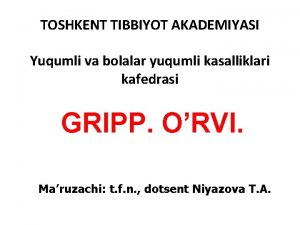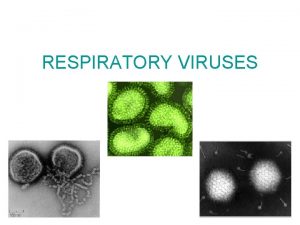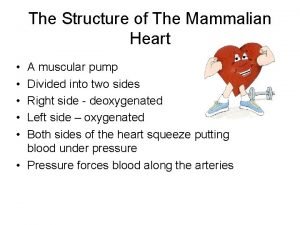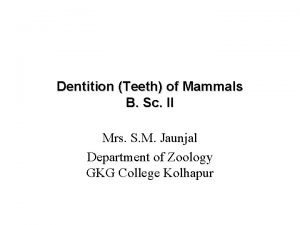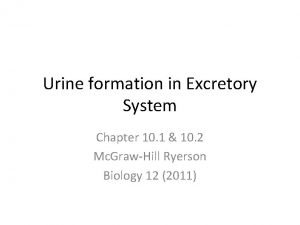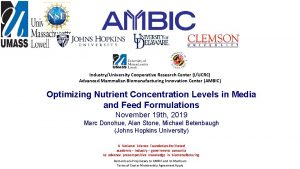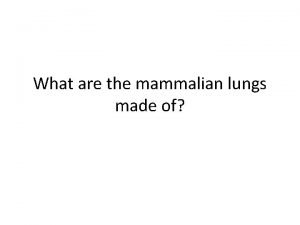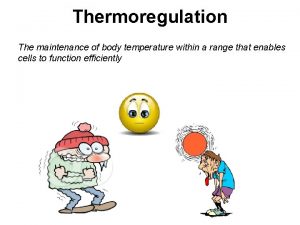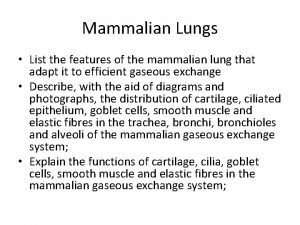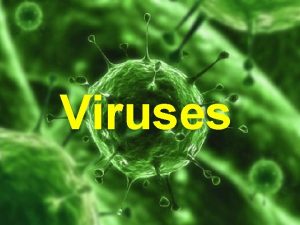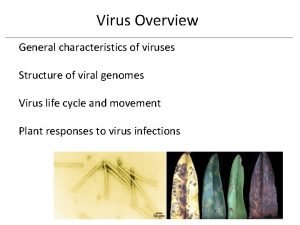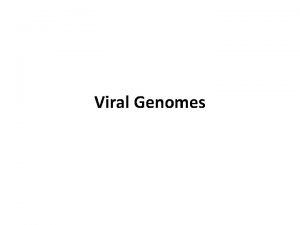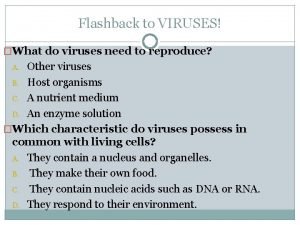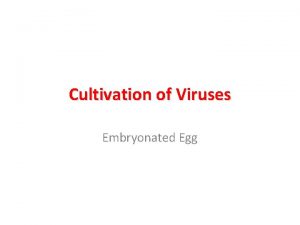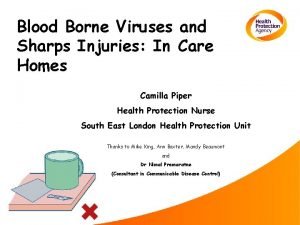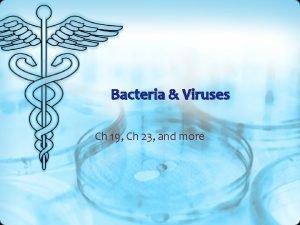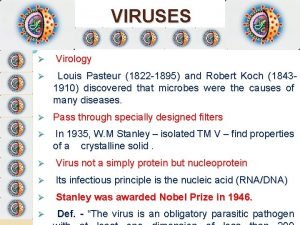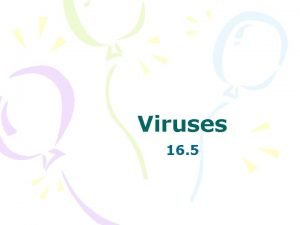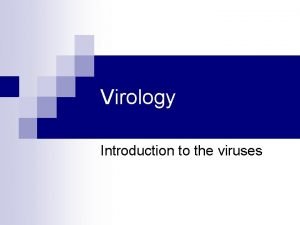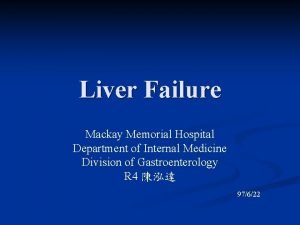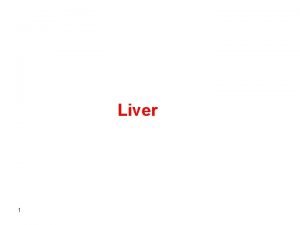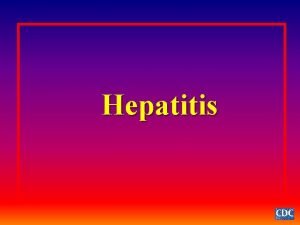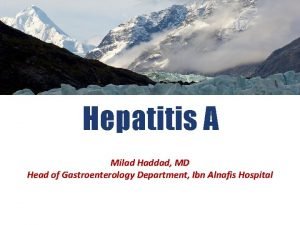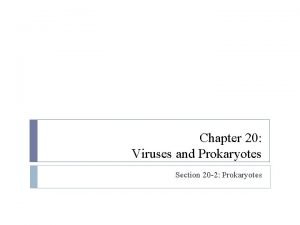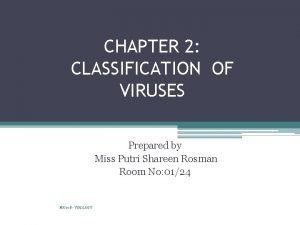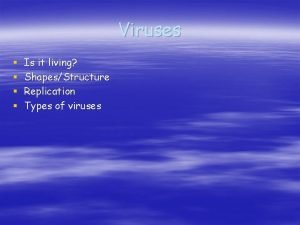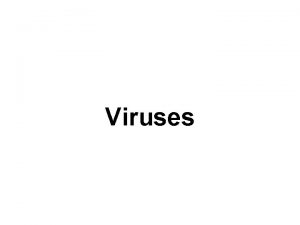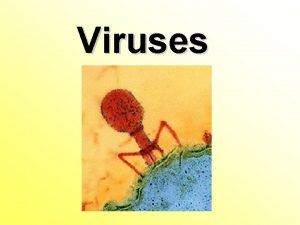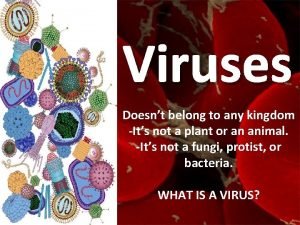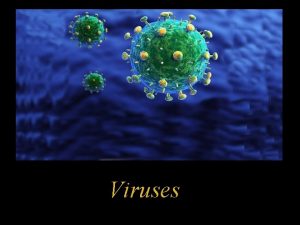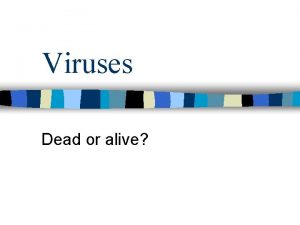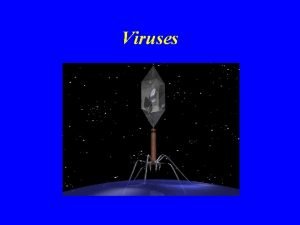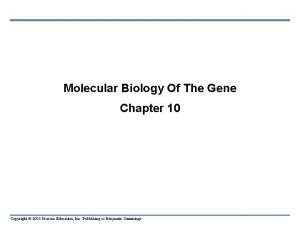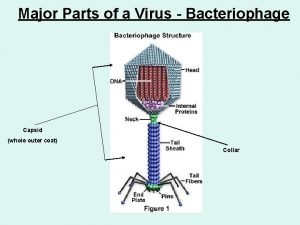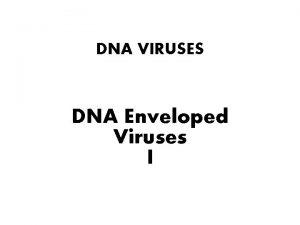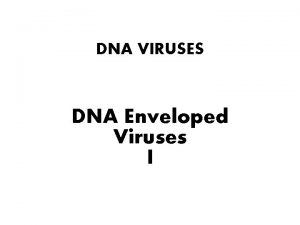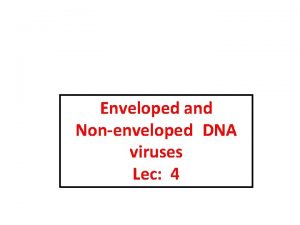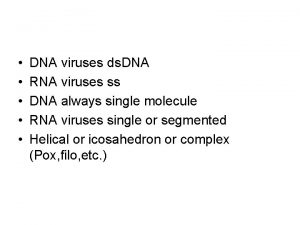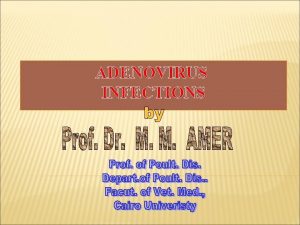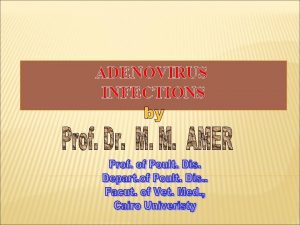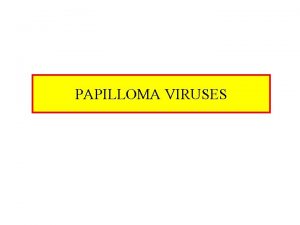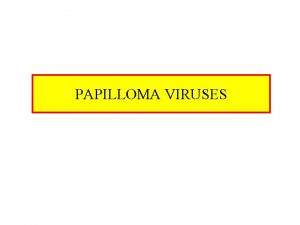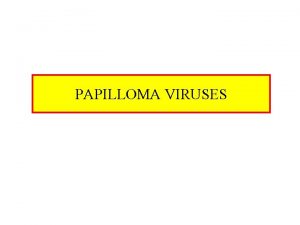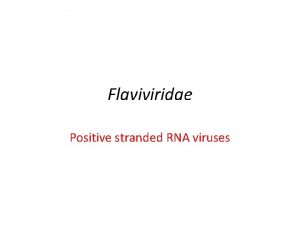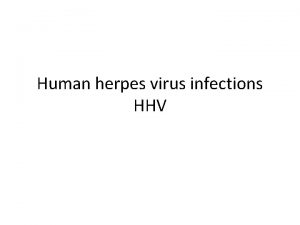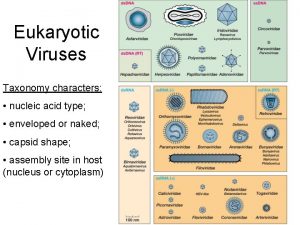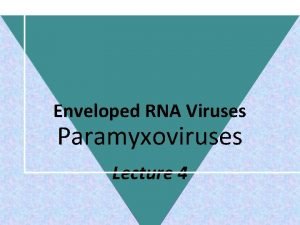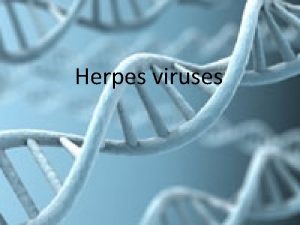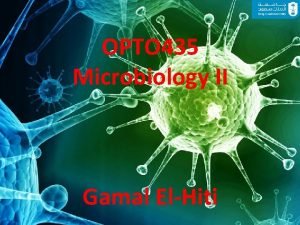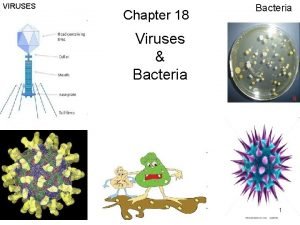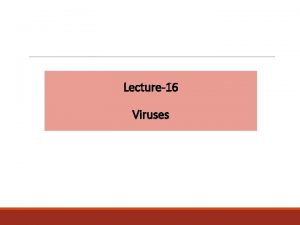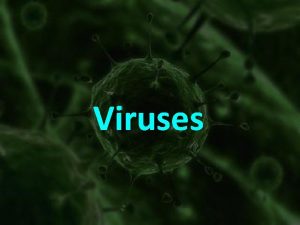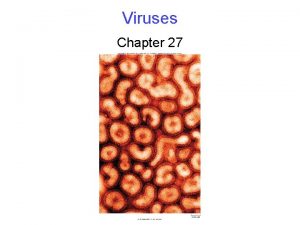Non enveloped DNA viruses ADENOVIRUS Mastadenovirus Mammalian Aviadenovirus










![Laboratory diagnosis�Isolation of virus in cell culture [different specimens] He. La cell line, Hep-2, Laboratory diagnosis�Isolation of virus in cell culture [different specimens] He. La cell line, Hep-2,](https://slidetodoc.com/presentation_image_h/1e0f2b8a2ced03bc50ca959881ada2d6/image-11.jpg)








![Diseases – B 19 [Parvo B 19] �Erythema infectiosum or slapped cheek syndrome or Diseases – B 19 [Parvo B 19] �Erythema infectiosum or slapped cheek syndrome or](https://slidetodoc.com/presentation_image_h/1e0f2b8a2ced03bc50ca959881ada2d6/image-20.jpg)

![Properties – �very small 22 nm �Non enveloped �ss DNA genome [-ve strand] �No Properties – �very small 22 nm �Non enveloped �ss DNA genome [-ve strand] �No](https://slidetodoc.com/presentation_image_h/1e0f2b8a2ced03bc50ca959881ada2d6/image-22.jpg)












![B 19 Ig. G persists for years but not found in immunocompromised [eg. AIDS] B 19 Ig. G persists for years but not found in immunocompromised [eg. AIDS]](https://slidetodoc.com/presentation_image_h/1e0f2b8a2ced03bc50ca959881ada2d6/image-35.jpg)













![Laboratory diagnosis�Clinically �Histopathology – Koilocytes in lesion �DNA hybridisation tests [commercially available] – detects Laboratory diagnosis�Clinically �Histopathology – Koilocytes in lesion �DNA hybridisation tests [commercially available] – detects](https://slidetodoc.com/presentation_image_h/1e0f2b8a2ced03bc50ca959881ada2d6/image-49.jpg)










- Slides: 59

Non enveloped DNA viruses

ADENOVIRUS – Mastadenovirus – Mammalian Aviadenovirus – Avians � 47 serotypes in 6 genera A, B, C, D, E & F – cause human disease. �Eg. - a. upper and lower respiratory diseases like pharyngitis, conjunctivitis, pneumonia, kerato-conjunctivitis can also occur. b. Gastroenteritis. c. Hemorrhagic cystitis d. In rodents it can cause sarcoma.

Properties - Non enveloped, ds-linear DNA, Icosahedral nucleocapsid. �Special feature – only virus with fiber - Protruding from each of 12 vertices of the capsid. Fiber is organ of attachment, it is a hemaggluttinin - also the main type of specific antigen. �Group specific antigen is also located on the hexon protein. �Serotypes 12, 18, 31 cause sarcomas at site of injection into lab rodents. Eg. Newborn hamsters. No evidence in humans.

Replication – �Fiber attach to cell surface. �Penetration �Uncoating – viral DNA to Nucleus �Host cell DNA dependent RNA polymerase transcribes early genes. �Splicing enzymes remove the RNA representing the introns- Leads to formation of RNA[Introns and exons common in eukaryotic cell were first described for adenovirus DNA]

�Early RNA is translated into non-structural proteins in cytoplasm �Viral DNA then replicates in the nucleus. �Late MRNA is transcribed and translated into structural viral proteins. �Virus assembly in nucleus �Virus released from cell by cell lysis [not budding]


Transmission�Aerosol droplets �Fecal oral �Direct inoculation of conjunctiva by tonometers or fingers. �Animal strains not pathogenic to humans. �Endemic world wide. �Outbreaks can occur in military recruits, hostels etc. Meaning close living conditon favours transmission. �Eg. Types 3, 4, 7 & 21 can cause respiratory disease. � 8, 9 – epidemic keratoconjunctivitis � 11, 21 – Hemorrhagic cystitis. � 40, 41 – infantile gastroenteritis. � 37 – cervicitis, urethritis [sexual transmission]

Pathogenic and immunity�The name adenovirus is given because it was first isolated from adenoids in 1953 �Infect mucosal epithelium of several organs. Eg. Respiratory tract, G. I. tract and conjunctiva. �Neutralising antibody develops following infection but is type specific and may be life long. �It also causes death of cell in acute infection but has latency in adenoids and tonsils.

Clinical features. URT – Pharyngitis, pharyngoconjunctival fever, acute respiratory disease. Fever, sore throat, coryza and conjunctivitis.

�LRT – Bronchitis, atypical pneumonie. �Hemorrhagic cystitis – hematuria and dysuria �Children under 2 years – Gastro enteritis with non bloody diarrhoea. � Adenovirus infections usually resolve spontaneously. �Approx 50% infections are asymptomatic.
![Laboratory diagnosisIsolation of virus in cell culture different specimens He La cell line Hep2 Laboratory diagnosis�Isolation of virus in cell culture [different specimens] He. La cell line, Hep-2,](https://slidetodoc.com/presentation_image_h/1e0f2b8a2ced03bc50ca959881ada2d6/image-11.jpg)
Laboratory diagnosis�Isolation of virus in cell culture [different specimens] He. La cell line, Hep-2, KB etc. to observe CPE. �It is also a exciting model for vector – so tried in gene therapy.


Direct – Inclusion body – basophilic

Electron Microscopy

�Immunofluorescence – using polyclonal or monoclonal antibody �For Feces – LA test, ELISA �Looking for viral DNA by electrophoresis. �Most imp. Serologic test – CF and haemagglutination inhibition. � 4 fold or greater Antibody titer increase [using the paired sera procedure].

Treatment- No antiviral therapy Prevention – �iatrogenic keratoconjunctivitis �maintain asepsis �hand washing.

�Vaccine – live non attenuated vaccine for types 4, 7, 21 given separately as enteric coated capsules for military only. �Since 1998 it is discontinued.

PARVO VIRUS-Parvo virinae – infects vertebrates -Densovirinae – infect insects

Parvovirinae – 3 genera 1. Parvo virus – diarrhoea in humans. Animal virus – Feline Pan leukopenia virus Canine parvo virus Cause serious veterinary disease 2. Erythrovirus – B 19 – divide rapidly in dividing cells autonomously. 3. Dependo virus – defective virus and they depend on a helper virus usually a adenovirus for replication. They are human adeno associated virus not known to cause disease
![Diseases B 19 Parvo B 19 Erythema infectiosum or slapped cheek syndrome or Diseases – B 19 [Parvo B 19] �Erythema infectiosum or slapped cheek syndrome or](https://slidetodoc.com/presentation_image_h/1e0f2b8a2ced03bc50ca959881ada2d6/image-20.jpg)
Diseases – B 19 [Parvo B 19] �Erythema infectiosum or slapped cheek syndrome or fifth disease. �Aplastic crises – especially in sickle cell anemia �Fetal infection – hydrops foetalis

�Pure red cell aplasia – suppression of bone marrow by virus. �Miscellaneous – doubtful – fulminant hepatitis, meningitis, encephalitis, vasculitis, myocarditis, cardiac allograft rejection and glomerulopathies in renal transplants.
![Properties very small 22 nm Non enveloped ss DNA genome ve strand No Properties – �very small 22 nm �Non enveloped �ss DNA genome [-ve strand] �No](https://slidetodoc.com/presentation_image_h/1e0f2b8a2ced03bc50ca959881ada2d6/image-22.jpg)
Properties – �very small 22 nm �Non enveloped �ss DNA genome [-ve strand] �No virion polymerase �One serotype with icosahedral symmetric capsid.

Replication�Adsorption to host cell receptor �Virion penetrate and moves to nucleus �Replication occurs �ss Genomic RNA is synthesized by the cellular RNA polymerase with DNA acting as intermediate. �Progeny virions assembled in the nucleus.


�B 19 replicates only when the cell is in the ‘S’ phase. �This is the reason why the virus replicates in red cell precursor and not in mature red cells.

Transmission�Respiratory route, blood transfusion. �World wide in distribution – half of population has antibodies to it. �Natural reservoir – humans. �Animals are not source for human infection

Pathogenesis and immunity 2 type of cells are infected. a. Red cell precursors in bone marrow – results in aplastic crisis. b. Cells of the endothelium – Partly contributes to the rash and immune complexes – virus + Ig. M or Ig. G contributes to rash and arthritis. �Infection and recovery gives life long immunity against re-infection.

Clinical features- 4 main presentations. a. Erythema infectiosum - slapped cheek syndrome, fifth disease. -Mild, mainly childhood disease. Bright red rash that is most prominent in the cheeks. -With low grade fever, running nose [coryza] and sore throat.

� A ‘Lacy’ less intense erythematous rash appears on the body. � Symptoms resolve in a week. � Main complication – B 19 arthritis. Mostly in adultswomen

b. Aplastic crisis – children with chronic anaemia, sickle cell anemia, thalassemia and spherocytosis have transient but severe aplastic anemia – aplastic crisis, when they are infected with B 19 virus. �People with normal RBC are not affected though their RBC precursors are infected.

c. Fetal infection – women infected during pregnancy virus may cross placenta and infect foetus. 1 st trimester – foetal death, <10% before 20 th week due to severe anemia. 2 nd trimester – hydrops foetalis. 3 rd trimester – No important clinical finding �B-19 is not a common cause of fetal abnormalities

d. Chronic B 19 infection - Immunodeficiencies especially HIV, chemotherapy or transplant patients – chronic anemia, Leukopenia, thrombocytopenia.

Laboratory diagnosis. Samples – serum, blood cells, tissue samples and respiratory secretions. �Most sensitive tests detect viral DNA Eg. -Dot blot hybridization of serum or tissue extracts. -In situ hybridization of fixed tissue. -PCR

Serological assays -based on recombinant parvovirus antigens derived from bacterial or baculovirus expression systems. Used to measure antibodies. �For fifth disease and aplastic crises. �Detect Ig. M antibody to B 19. �Indicates recent infection. �Present for 2 -3 months in the circulation after infection
![B 19 Ig G persists for years but not found in immunocompromised eg AIDS B 19 Ig. G persists for years but not found in immunocompromised [eg. AIDS]](https://slidetodoc.com/presentation_image_h/1e0f2b8a2ced03bc50ca959881ada2d6/image-35.jpg)
B 19 Ig. G persists for years but not found in immunocompromised [eg. AIDS] So viral DNA in blood by PCR in these cases.

Fetal infection – �PCR of amniotic fluid detects virus. �Virus difficult to grow so not commonly done. �Diagnostic tests are available only in a few laboratories.

Treatment and prevention�No specific treatment �Pooled Ig have a beneficial effect on B 19 infection in immunodeficient patient. �Fifth disease and aplastic crises are treated symptomatically. �No vaccine or chemoprophylaxis.

PAPILLOMA VIRUS – �Papova viridae - Papilloma virus �Polyoma virus Causes – Papillomas – Benign tumors of squamous epithelial cells – eg. Wart on skin HPV – 16 – implicated to cause Cancer cervix

Properties – �Non enveloped �ds circular DNA �Icosahedral nucleocapsid �Belong to papova virus group. �Similar to polyoma virus and SV 40 virus. �But longer, larger genome and antigenically distinct.

�Two early genes E 6 & E 7 are implicated in carcinogenesis. � These genes encode proteins – that inactivate proteins encoded by tumor suppressor genes in human cells. Eg. p 53 gene proteins suppressed by E 6 RB [retinoblastoma] gene by E 7. �This inactivation of P 53 & RB gene is important step in the process by which normal cell becomes a cancer cell.

�DNA restriction fragmentation analysis – 100 types of papilloma viruses. �These viruses have a very pronounced predilection for certain tissue. eg. Skin warts caused by HPV – 1 to HPV 4. Genital warts HPV 6, HPV 11.

Replication- Little is known because virus grows very poorly in cell culture or not at all. �In human tissues infectious virus particles is situated in the terminally differentiated squamous cells rather than the basal cells. �In malignant cell viral DNA is integrated into host cell DNA near the cellular oncogenes.

�E 6 &E 7 are over expressed. �But in latently infected non-malignant cell –viral DNA is episomal, E 6 & E 7 not over expressed because of an early gene called E 2. This E 2 controls E 6 & E 7 expression. �This E 2 is functional only when the viral DNA is episomal but is inactivated when it is integrated.

Transmission and epidemiology�Mainly by skin to skin contact and by genital contact. �Genital warts is one of the most common STD. �Animal virus is not source of human infection.

Pathogenesis and immunity�Infected squamous cell show characteristic cytoplasmic vacuole – This process is called Koilocytoses. �So Koilocytes are hall mark of papilloma virus infection. �Most warts are benign- do not progress to malignancy.

�But HPV is implicated in carcinoma cervix. Protein encoded by viral genome E 6 & E 7 interfere with growth inhibiting protein produced by P 53 and RB gene. �So contributes to the oncogenicity of the virus. �Both CMI and AMI involved. �Spontaneous regression of warts can take place because of this. �More extensive warts in immunocompromised. Eg. AIDS.

Clinical features�Predominant finding is papillomas of various organs. �Specific HPV types cause. �Skin and plantar wart HPV 1, HPV 2, HPV 3 & HPV 4.

�Genital wart – condyloma accuminata – HPV 6, HPV 11. �Carcinoma of cervix, the penis, anus. �Premalignant lesion called intraepithelial neoplasia – HPV-16, HPV 18. �Occult premalignant lesion of cervix and penis can be revealed if you apply acetic acid to tissue.
![Laboratory diagnosisClinically Histopathology Koilocytes in lesion DNA hybridisation tests commercially available detects Laboratory diagnosis�Clinically �Histopathology – Koilocytes in lesion �DNA hybridisation tests [commercially available] – detects](https://slidetodoc.com/presentation_image_h/1e0f2b8a2ced03bc50ca959881ada2d6/image-49.jpg)
Laboratory diagnosis�Clinically �Histopathology – Koilocytes in lesion �DNA hybridisation tests [commercially available] – detects presents of viral DNA. �Serology rarely done. �Culture unsuccessful.

Treatment and prevention�Genital warts – Podophyllin. �Alpha interferon – effective and better for preventing recurrences than antiviral treatment. �Liquid nitrogen commonly used for skin warts. �Plantar warts – surgical removal, topical salicylic acid. �Vaccine is marketed nowadays (recombinant vaccine containing antigen HPV 6, 11, 16 & 18 for adolescent & young women. �Common counseling for sexual behavior.

Polyoma and SV 40 Virus�Best characterised oncogenic papova viruses of animals �Poly=many, ma=tumour �Cause wide variety if histologically different tumor when inoculated into newborn rodents �Natural host is mouse

�SV 40 isolated from normal Rhesus monkey kidney cells �Causes sarcoma in new born hamsters

�Polyoma and SV 40 share many chemical and biological features - ds circular super coiled DNA of mol. wt. 3 x 10⁶ - 45 nm icosahedral nucleocapsid � sequence of DNA and antigens are different

�Both undergo a lytic or permissive cycle in cells of their natural host with production of progeny virus �If they infect cells of heterologous species, nonpermissive cycle occurs, no virus is produced , cell is malignantly transformed �In transformed cells, viral DNA integrates into the cell DNA and only early proteins are synthesized. �Some of the proteins like T antigen are required for induction and maintenance of transformed state

JC virus- (John Cunningham virus) �Human papova virus �Causes progressive multifocal leukoencephalopathy �This is a fatal demyelinating disease of white matter and multiple areas of brain involved �This occurs primarily in compromised CMI especially in AIDS

�Antigenically this virus is distinct from others like HPV � 75% of normal people have antibodies to JC virus meaning infection is widespread �Disease occurs when latent virus is activated in an immuno compromised

�Diagnosis- electron microscopy of diseased brain tissue -Cytology – exfoliated urine – enlarged cells with deeply stained basophilic nuclei with a single inclusion �Virus isolation- urine or brain biopsy material grown in fetal glial cell culture - Growth made out by the Haemagglutination inhibition test �Viral antigen – ELISA of urine sample, immunofluorescence of biopsy material �Viral nucleic acid – nucleic acid hybridisation and PCR �Autopsy- in situ hybridisation of brain biopsy material

BK virus�isolated from urine of renal transplant recipient �Subclinical infection seen in children before 10 yrs of age �Upper respiratory symptoms �Persists for life in kidneys �Reactivation can occur during the last trimester of pregnancy and also following immunosuppression for organ transplants �Leads to asymptomatic shedding in urine

�Diagnosis 1. Electron microscope – urine of renal transplant patient. Detection of viral antigen of ELISA 2. cytopathology- similar to JC virus 3. Virus isolation- human diploid fibroblasts 4. Detection of viral nucleic acid – PCR, DNA hybridization
 Unlike lytic viruses lysogenic viruses do not
Unlike lytic viruses lysogenic viruses do not Watch?v=dckvspcd8gs
Watch?v=dckvspcd8gs Sklerada
Sklerada Life cycle of adenovirus
Life cycle of adenovirus Coding dna and non coding dna
Coding dna and non coding dna Glycolyaia
Glycolyaia Heart labelled diagram
Heart labelled diagram Mammalian excretory system
Mammalian excretory system Tricodonta
Tricodonta Chapter 30 section 2 diversity of mammals
Chapter 30 section 2 diversity of mammals Mammalian excretory system
Mammalian excretory system Mammalian excretory system
Mammalian excretory system Mammalian biomanufacturing
Mammalian biomanufacturing Mammalian excretory system
Mammalian excretory system Characteristic of trachea
Characteristic of trachea Mammalian reflex
Mammalian reflex Mammalian lung
Mammalian lung Veux-tu briser du péché le pouvoir parole
Veux-tu briser du péché le pouvoir parole Replication fork
Replication fork Bioflix activity dna replication lagging strand synthesis
Bioflix activity dna replication lagging strand synthesis Enzyme involved in dna replication
Enzyme involved in dna replication Dna and genes chapter 11
Dna and genes chapter 11 Why are viruses considered nonliving?
Why are viruses considered nonliving? Bacteriophage characteristics
Bacteriophage characteristics General characteristics of viruses
General characteristics of viruses Viruses
Viruses Lysogenic viruses do not
Lysogenic viruses do not Section 19-3 diseases caused by bacteria and viruses
Section 19-3 diseases caused by bacteria and viruses Cultivation of viruses
Cultivation of viruses Egg inoculation technique
Egg inoculation technique Egrette - chapter 21
Egrette - chapter 21 Nonliving particle that replicates inside a living cell
Nonliving particle that replicates inside a living cell Blood borne viruses
Blood borne viruses Bacteria and viruses chapter 7 lesson 1 answer key
Bacteria and viruses chapter 7 lesson 1 answer key Are viruses alive yes or no
Are viruses alive yes or no General characters of viruses
General characters of viruses Lytic infection
Lytic infection General characters of viruses
General characters of viruses Biosynthesis of rna viruses
Biosynthesis of rna viruses Hepatotropic viruses
Hepatotropic viruses Hepatotropic viruses
Hepatotropic viruses Hepatotropic viruses
Hepatotropic viruses Milad haddad
Milad haddad Chapter 20 viruses and prokaryotes
Chapter 20 viruses and prokaryotes Virus taxonomy
Virus taxonomy Study guide chapter 18 section 1 bacteria
Study guide chapter 18 section 1 bacteria Replication of viruses
Replication of viruses How do viruses differ from living things
How do viruses differ from living things Importance of viruses
Importance of viruses What kingdom do viruses belong to
What kingdom do viruses belong to Cmv
Cmv Best viruses
Best viruses Viruses video
Viruses video Properties of viruses
Properties of viruses Are viruses dead or alive
Are viruses dead or alive General properties of viruses
General properties of viruses Virus
Virus Hershey and chase experiment
Hershey and chase experiment Parts of a virus
Parts of a virus Baltimore classification of viruses
Baltimore classification of viruses


